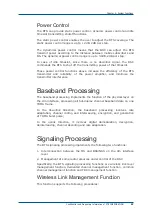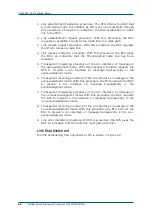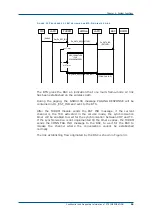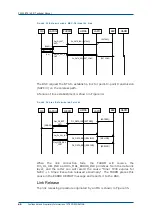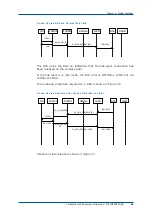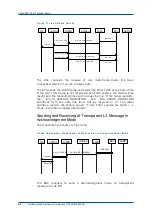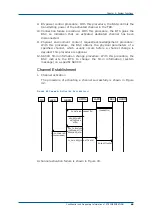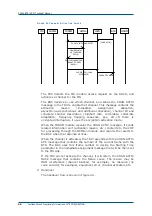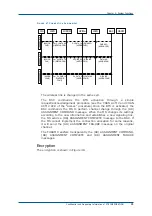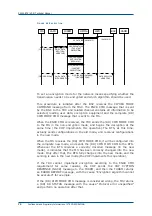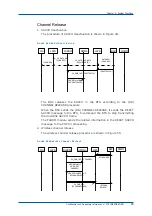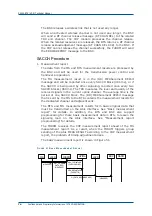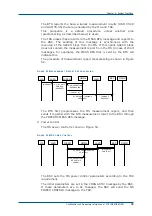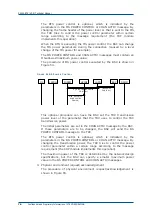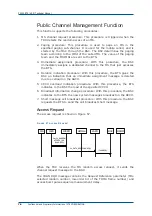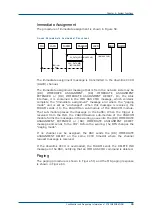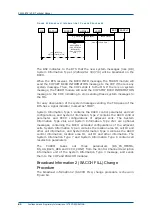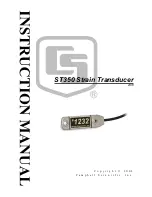
ZXG10-BTS (V2.9) Technical Manual
70
Confidential and Proprietary Information of ZTE CORPORATION
F
I G U R E
4 6
M
O D E
M
O D I F I C A T I O N
F
A I L E D
MS
LAPDm
FURRM
HPIMa
LAPD
BSC
OAMM
(MODE MODIFY)
DL_DATA_IND (MODE MODIFY)
MPH_RRCmdToCHP
(CHP MODE
MODIFY)
MPH_CHPIndToRR
(CHP MODE
MODIFY RESP)
DL_DATA_REQ (MODE
MODIFY NACK)
The BSC requests to change the channel mode of an activated channel.
The BSC sends a MODE MODIFY to the BTS to trigger the
reconfiguration of the BTS. When the BTS receives the message, it
modifies the encoding and decoding algorithms (the CHP module
implements this operation), and modifies the inband mode of the BTS-
TRAU frame. After it changes into the new mode, the BTS returns a
MODE MODIFY ACK message. If the TRX cannot change the mode for
some reasons, it returns a MODE MODIFY NACK message.
If the response message indicates the successful mode change and the
TCH channel changes into the service mode, the FURRM starts the
timer to wait for the CHP SYNCHRONIZED message for the
synchronization between CHP and TC. If the message is not received
when the timer expires, it sends the CONN FAIL IND message to the
BSC.
At the same time, the BSC sends a (RR) CHANNEL MODE MODIFY
message that contains the new mode to be used to trigger the
reconfiguration of the MS. When it is implemented, the MS responds
with the (RR) CHANNEL MODE MODIFY ACKNOWLEDGE message to the
BSC through the BTS. If the MS does not support the channel to be
modified, it will keep its original mode, and place related information in
the CHANNEL MODE MODIFY ACKNOWLEDGE message. These two are
transparent messages.
2. Connection allocation
The procedure of connection assignment is shown in Figure 47.
Summary of Contents for ZXG10-BTS
Page 4: ...This page is intentionally blank ...
Page 8: ...Figures 121 Tables 123 ...
Page 9: ...This page is intentionally blank ...
Page 10: ......


